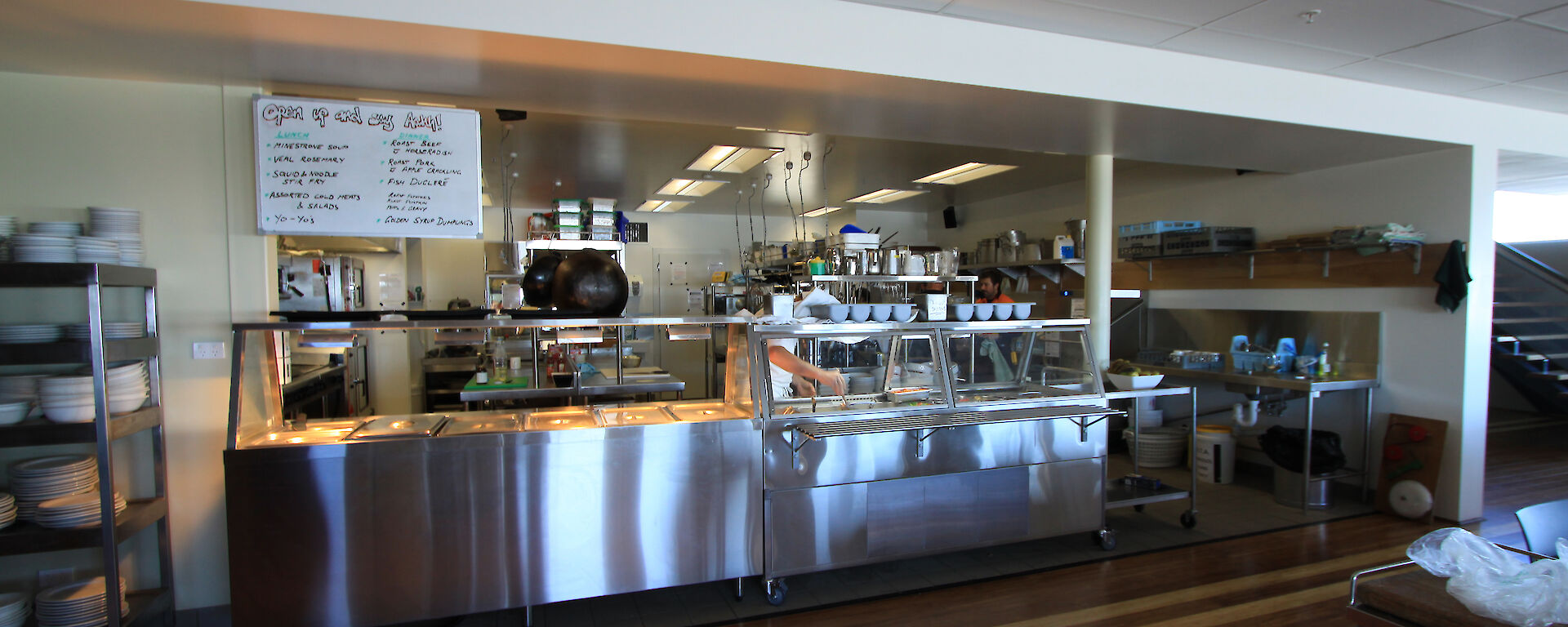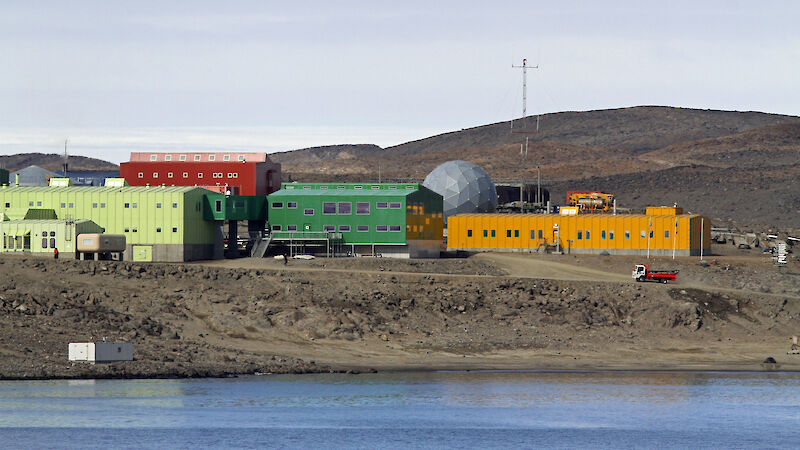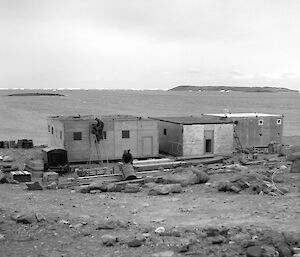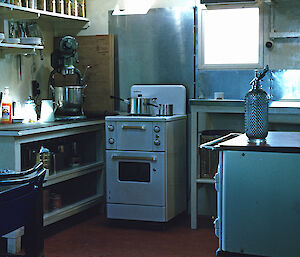The common theme, irrespective of era, are the four main functions of the station to sustain life: water, food, power and heat.
In the early years, water was obtained in winter by using heat exhaust from the engines to melt ice, and in summer a solar still was used to desalinate seawater. Fresh water was a major concern and the chief engineer of the Kista Dan rigged up a distilling plant with two electric elements.
The solar still was one of many different methods adopted over the next 50 years to supply adequate fresh water at Davis. Today a reverse osmosis water treatment plant is now utilised at Davis to carry out the same basic task. However it produces 75 000 litres per day during January and stores 1.5 million litres to supply the station for the next 12 months. There is no ability to make water over the winter period.
With less than 10 people on station during the early years, the kitchen was very similar to that found in a home of that era. The crew also took turns to be the cook. Today, with up to 100 people needing to be fed over summer, there are three professional chefs during summer and one for winter (see Feeding the troops).
The engine hut of the original Davis research station initially housed the two Lister 15 kVa generator plants, a small workshop and the bathroom. This was sufficient to supply all the power and heating needs for the 10 personnel on station. Today, Davis has a main powerhouse with four 125kW Caterpillar 3306 diesel powered generators and an emergency powerhouse with two 125kW generators. A main ring of power feeds all the buildings, as well as some of the more remote scientific facilities.
Heating in the original station was primarily from electrical heaters. Since the early 1980s Davis has been heated primarily by capturing the heat from the powerhouse engines and piping it all round station, similar to a number of northern hemisphere cities. In the colder months, this heating is augmented by diesel-fired boilers to ensure that sufficient heat is available for the numerous buildings.
Back in the 1950s the buildings were small and functional, and although efficient, had little privacy. Today the award-winning design buildings are made of state-of-the-art materials and provide functionality as well as an excellent quality of life. The buildings are warm and have places to play and rest, such as the climbing wall, library, cinema, gym, and games area. There are also private areas and we have good communication links with home.
Our clothing has evolved over the years. We now have clothes made of modern fibres that are warm, light and breathable. The job descriptions have also changed. Where generalists were once sought, we now have highly trained specialists in all fields.
All in all, modern day life in Antarctica is pretty good. We have the best of both worlds — the location with its beautiful icebergs, charismatic penguins, the adventure and experience of living and working in Antarctica, but in a much more comfortable and sustainable way. So while we admire those that have come before us, we don’t envy their conditions. Instead we are grateful for the comforts of home in this extraordinary location.





